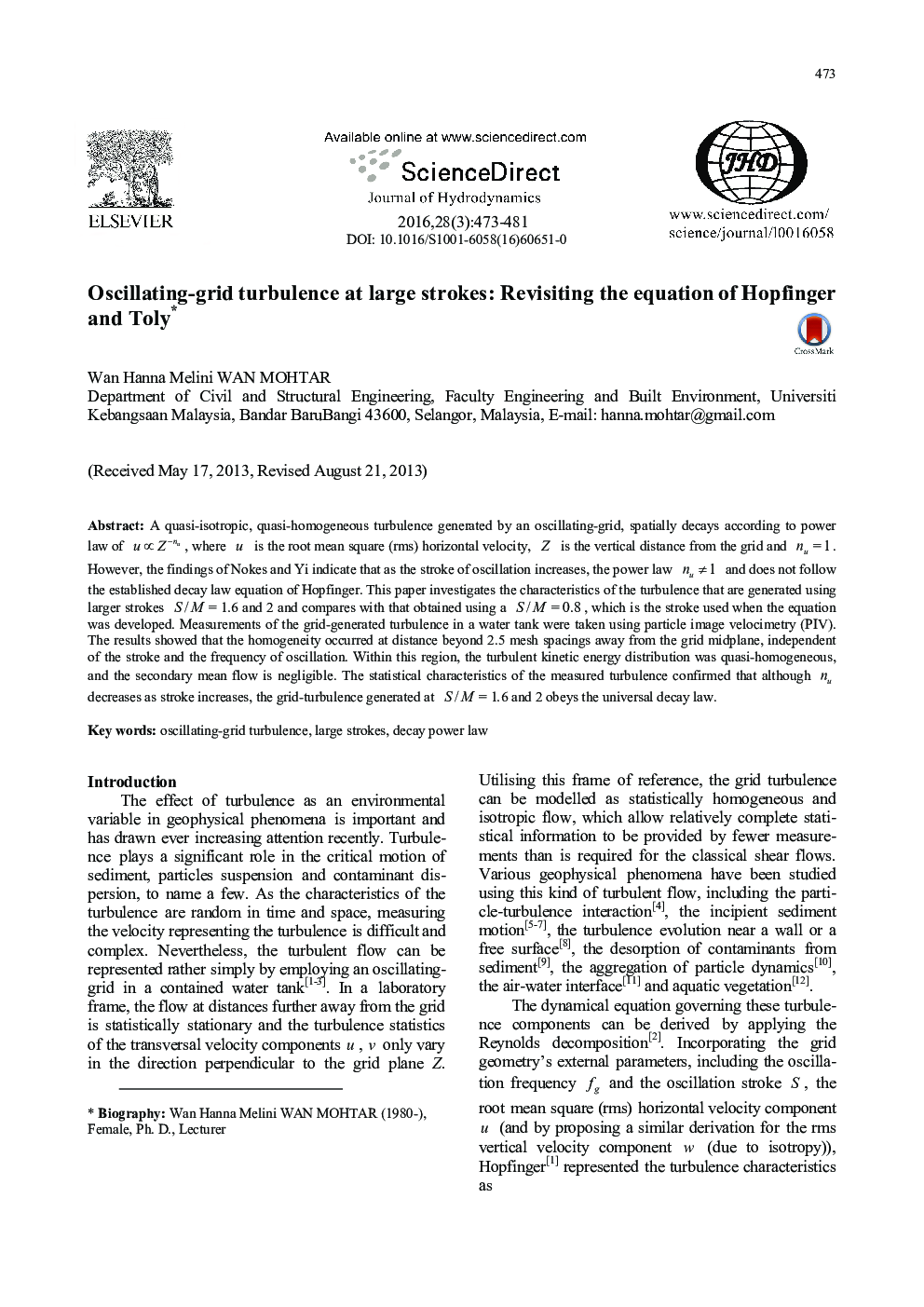| Article ID | Journal | Published Year | Pages | File Type |
|---|---|---|---|---|
| 1721843 | Journal of Hydrodynamics, Ser. B | 2016 | 9 Pages |
A quasi-isotropic, quasi-homogeneous turbulence generated by an oscillating-grid, spatially decays according to power law of u ∝ Z−nu, where u is the root mean square (rms) horizontal velocity, Z is the vertical distance from the grid and nu = 1. However, the findings of Nokes and Yi indicate that as the stroke of oscillation increases, the power law nu ≠ 1 and does not follow the established decay law equation of Hopfinger. This paper investigates the characteristics of the turbulence that are generated using larger strokes S/M 1.6 and 2 and compares with that obtained using a S/M = 0.8, which is the stroke used when the equation was developed. Measurements of the grid-generated turbulence in a water tank were taken using particle image velocimetry (PIV). The results showed that the homogeneity occurred at distance beyond 2.5 mesh spacings away from the grid midplane, independent of the stroke and the frequency of oscillation. Within this region, the turbulent kinetic energy distribution was quasi-homogeneous, and the secondary mean flow is negligible. The statistical characteristics of the measured turbulence confirmed that although nu decreases as stroke increases, the grid-turbulence generated at S/M 1.6 and 2 obeys the universal decay law.
